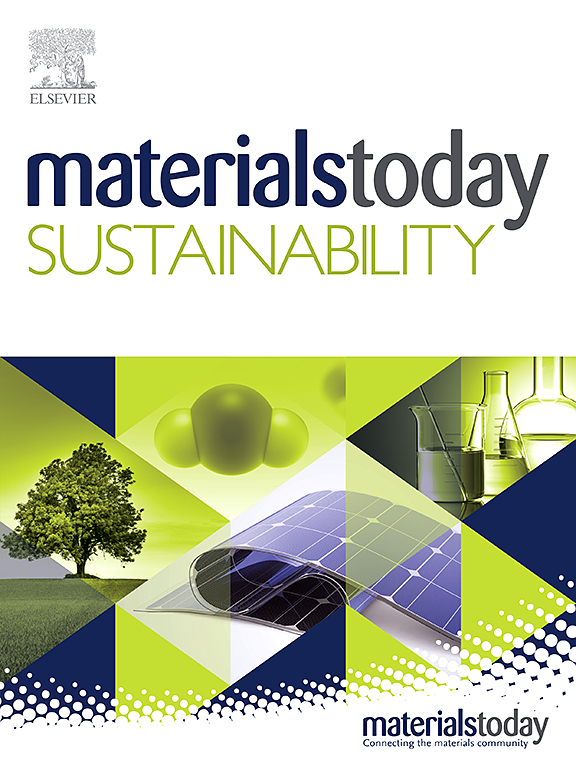mof基复合材料对水相中Pb(II)离子的检测和吸附去除研究进展
IF 7.1
3区 材料科学
Q1 GREEN & SUSTAINABLE SCIENCE & TECHNOLOGY
引用次数: 0
摘要
金属有机框架(mof)及其复合材料为铅(Pb2+)离子的检测和吸附提供了很有前途的解决方案,铅(Pb2+)离子与水中铅污染有关,构成健康风险。mof具有可调的孔隙率、高表面积和固有的荧光特性,可以在各种环境条件下选择性地检测和去除Pb2+离子。本文描述了设计具有最佳吸附性能的mof的关键策略,并整合了还原氧化石墨烯(rGO)、壳聚糖、纤维素和磁性纳米颗粒等材料,以提高容量、选择性和稳定性。对Pb2+吸附机理的深入研究表明,化学吸附和物理吸附过程都有助于有效地去除铅,特别是通过具有特定配体和金属节点的定制MOF结构。最近的进展包括基于mof的便携式护理点设备的开发,能够快速,现场检测和分析Pb2+污染。因此,基于mof的系统具有巨大的潜力,可以作为解决水中铅污染的实用工具,在不同的环境环境中结合灵敏度、选择性和可扩展性。本文章由计算机程序翻译,如有差异,请以英文原文为准。

Recent advances in MOF-based composites for the detection and adsorptive removal of Pb(II) ions in aqueous phase
Metal-organic frameworks (MOFs) and their composites offer promising solutions for the detection and adsorption of lead (Pb2+) ions, posing health risks associated with lead contamination in water. With tunable porosity, high surface area, and inherent fluorescence, MOFs can selectively detect and remove Pb2+ ions across various environmental conditions. This article describes the key strategies for designing MOFs with optimal adsorption properties and integrating materials like reduced graphene oxide (rGO), chitosan, cellulose, and magnetic nanoparticles to enhance capacity, selectivity, and stability. Mechanistic insights into Pb2+ adsorption reveal that both chemisorption and physisorption processes contribute to effective lead removal, particularly through tailored MOF structures with specific ligands and metal nodes. Recent advancements include the development of portable, point-of-care devices based on MOFs, enabling rapid, on-site detection and analysis of Pb2+ contamination. MOF-based systems thus hold significant potential as practical tools for addressing lead pollution in water, combining sensitivity, selectivity, and scalability in diverse environmental settings.
求助全文
通过发布文献求助,成功后即可免费获取论文全文。
去求助
来源期刊

Materials Today Sustainability
Multiple-
CiteScore
5.80
自引率
6.40%
发文量
174
审稿时长
32 days
期刊介绍:
Materials Today Sustainability is a multi-disciplinary journal covering all aspects of sustainability through materials science.
With a rapidly increasing population with growing demands, materials science has emerged as a critical discipline toward protecting of the environment and ensuring the long term survival of future generations.
 求助内容:
求助内容: 应助结果提醒方式:
应助结果提醒方式:


